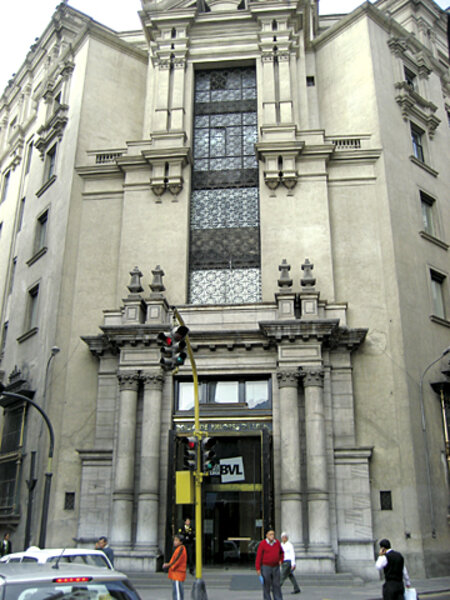Peru's trading floor came too late
Loading...
| Lima, Peru
• A local, slice-of-life story from a Monitor correspondent.
Through the huge doors of a grand Spanish colonial-style building in historic downtown Lima, more than $40 million changes hands monthly on Peru’s sole stock exchange. Only one thing might seem strange to the casual visitor: The trading floor is always empty.
The 1930s-era building was gutted and redesigned in the early 1990s to house the Bolsa de Valores de Lima, a symbol of the many economic reforms that paved the way for Peru’s 8.8 percent economic growth in 2010. But the newly installed white-marble trading floor never saw a single trade. In 1996 the BVL began using an electronic trading platform called Elex, keeping the market’s 23 licensed brokerage firms in their offices and turning this building into something of a museum.
The transition was both bad and good.
“An important output of the transition was the savings in delays that usually stem from floor trading problems,” says economic analyst Hector Collantes of Lima-based Apoyo Consultoría. The transition also brought transparency and regulatory reforms to the BVL that put it on track to merge May 30 with the markets of Chile and Colombia, which also employ electronic trading systems.
Their integration into the Mercado Integrado Latino Americano (MILA) would have been nearly impossible if they still operated on physical trading floors, says Prof. Terrence Hendershott at the University of California, Berkeley. “Operating one common electronic system saves overhead (fixed costs) and lowers costs for investors to connect to the markets (because they use a common electronic interface),” he said in an e-mail.
MILA is now the second-largest bourse in Latin America after Brazil, trading 565 companies all together and providing new places for the region’s rising middle and upper classes to put their money. But many Peruvians are unaware that the stock exchange exists, much less how it goes about trading.
On a recent day, Pedro Rivera wandered onto the bourse’s never-used trading floor. He pulled from his briefcase a yellowing piece of paper more than 20 years old that stated he was entitled to 121 shares in a local textile company. He’d come to the BVL to cash them in. Informed that no traders were in the building, he said he’d try visiting the textile company directly. He was retiring in six months, and had limited time to find the brokers who would purchase his company stock.





